What is the Cima Coppi? The story of the Giro d'Italia's highest climb
History, facts and figures behind the tallest summit of the Giro
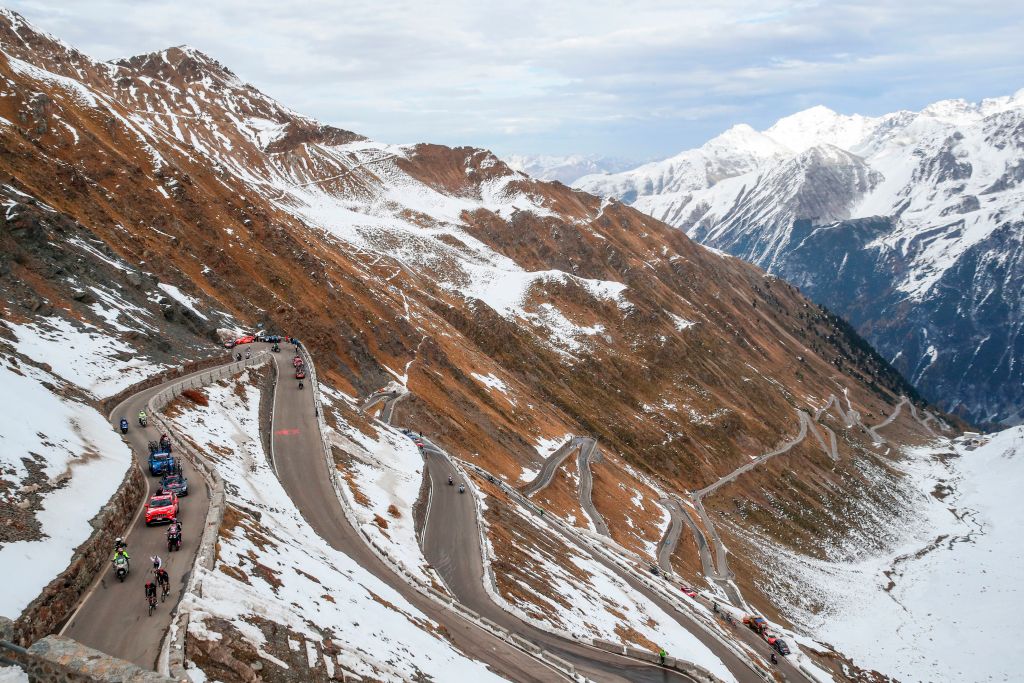
The famed mountains and passes of the Giro d'Italia are the stuff of legends throughout over 100 editions of the race.
Climbs such as the Gavia, Pordoi, Tre Cime di Laverado, Blockhaus, Finistre and – since the 1980s – the brutally steep Zoncolan, have provided the battlegrounds and backdrops to numerous memorable moments for over a century of racing for the Maglia Rosa.
But the Passo dello Stelvio, first used in the 1953 Giro, is the most famous of all. Standing at 2,757m, it is the second highest paved road in the Alps. Its iconic switchbacks are a photographer's dream, a climber's dream, and a sprinter's worst nightmare.
When featured in the Giro route, as in the 2024 edition, the Stelvio becomes the Cima Coppi, a special award given to the first rider to cross the line of the highest point of the three-week Grand Tour.
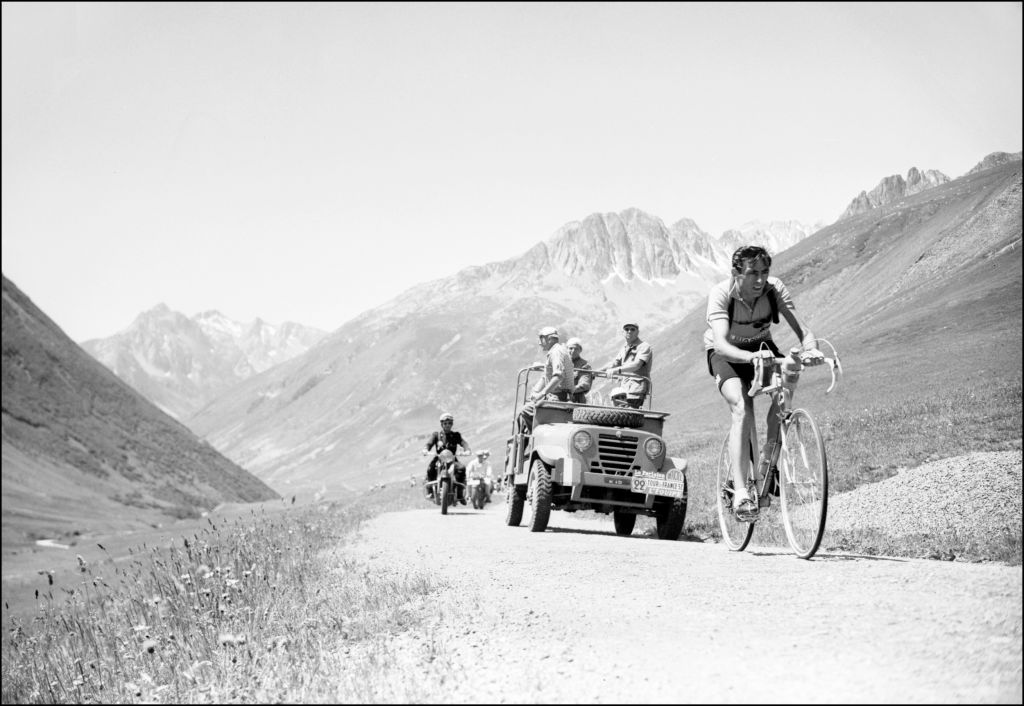
First introduced in 1965, the award honours the great Fausto Coppi, a five-time winner of the Maglia Rosa, who died in 1960. Race director Vincenzo Torriani gave the Cima Coppi double points in the mountains competition, making it a prime target for maglia azzura contenders. In recent years, however, its points tally has been reduced to the same as a first-category summit finish, but it remains a special prize and an honour to win.
The Stelvio is a fitting setting for the Cima Coppi, as it was here in 1953 – the first year of the mountain's inclusion – that Il Campionissimo sealed his record-equalling fifth Giro d'Italia win, dropping the hitherto imperious Hugo Koblet to overcome an almost 2 minute deficit and allowing Coppi to enter the finish city of Milan the following day with the race win sealed.
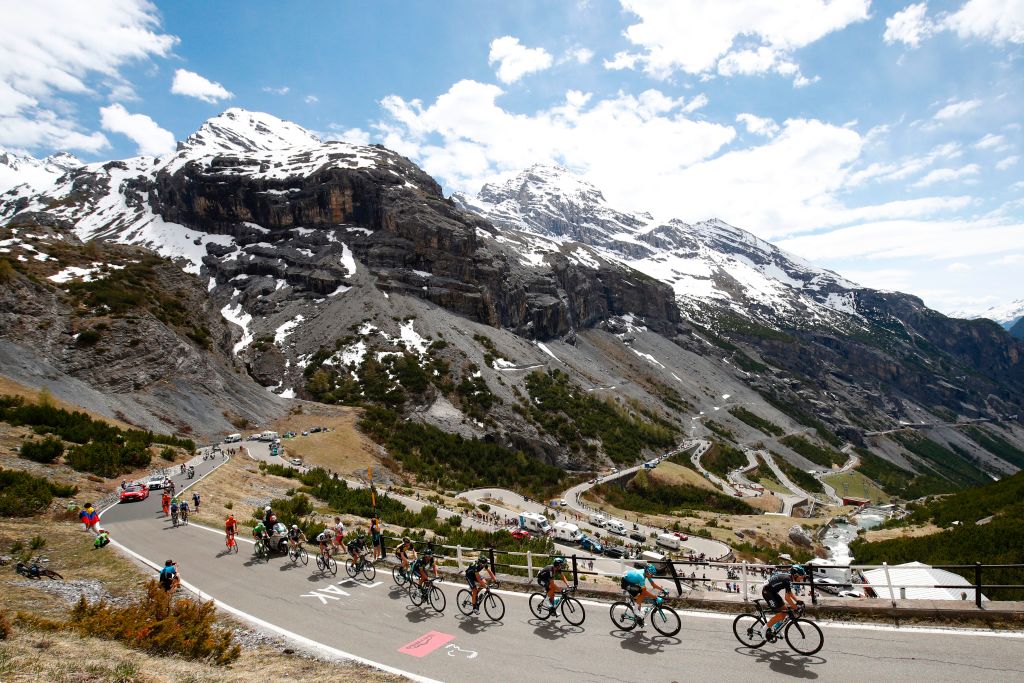
Cima Coppi records
Most appearances as Cima Coppi
Get The Leadout Newsletter
The latest race content, interviews, features, reviews and expert buying guides, direct to your inbox!
- Pordoi, 2,239m – 14 editions (1966, 1970, 1979, 1983, 1984, 1986, 1987, 1990, 1991, 1992, 1993, 1997, 2002, 2022)
- Stelvio, 2,757m – 10 editions (1972, 1975, 1980, 1994, 2005, 2012, 2014, 2017, 2020, 2024) NB: Also scheduled for 1965, 1988 and 2013 but route modified due to adverse weather.
Most wins
- José Manuel Fuente (Spain) – 1972, 1973, 1974
- José Jaime González (Colombia) – 1997, 1999, 2000
Most wins by nationality:
- Italy – 22
- Spain – 11
- Colombia – 8
- France – 5
Most extraordinary winner?

Chris Froome, not a racer renowned for his attacking style, was the protagonist of one of the greatest days in Giro history on stage 19 of the 2018 race. Beginning the day in fourth, 3:22 down on maglia rosa Simon Yates, that year's Cima Coppi, the 2,178m Finestre, provided the springboard for an astonishing 80km solo break that broke Yates and catapulted Froome into pink. He became Britain's first Giro d'Italia winner three days later in Rome. Remarkable.
Relive stage 19 here.
Most unlikely winner
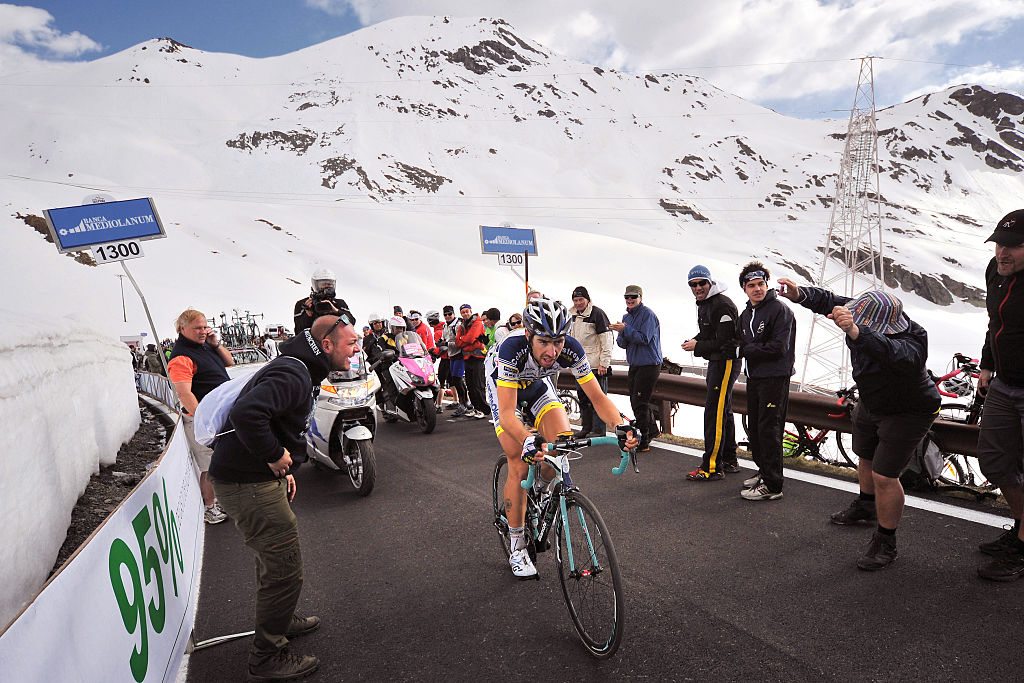
Thomas de Gendt may now be renowned for being the veteran breakaway specialist, making extraordinary long-distance solo efforts and picking up the occasional memorable Grand Tour stage win in the process, but as a young pro with Vaconsoleil back in 2012, the Belgian had GC aspirations.
And it was a De Gendt-esque effort that landed him the Cima Coppi on the Stelvio, pressing on alone for the final 16 kilometres of the ascent and shooting up the GC standings to fourth in the process.
He would rise to third in the following day's stage 21 time trial in Milan, becoming the first Belgian to mount a Grand Tour podium since Johan Bruyneel in 1995.
Lowest Cima Coppi
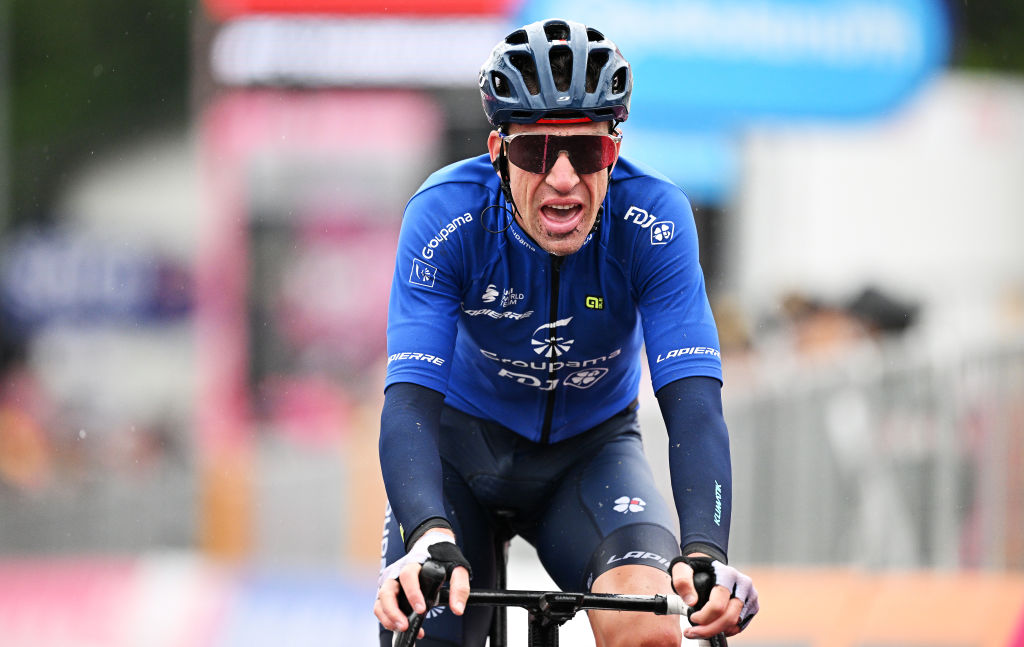
Although 2,010 metres is nothing to be sniffed at, the Passo del Sampione – better known to English speakers as the Simplon Pass – is technically the least high Cima Coppi climb in its 59-year existence.
Whilst rail passengers pass beneath the mountain between Italy and Switzerland in the almost 20 kilometre-long tunnel, Giro d'Italia riders haul themselves over the pass.
The most notable recent history of Simplon-related stories relates to unlikely GC leader Bruno Armirail, the French domestique spending two days in the leader's jersey in 2023 following a timely break on the climb that Team Ineos were glad to let go and hand over responsibility to FDJ-Groupama.
The Cima Coppi winner of 1985, however, the only time the Sampione was awarded the status, was Reynal Montoya of the famous Café Colombia team. He would go on to become a three-time Colombian national road race champion.
Cima Coppi winners
| Year | Stage | Climb | Elevation | First cyclist to summit | Notes |
|---|---|---|---|---|---|
| 1965 | 20 | Stelvio Pass | 1,958m* | Graziano Battistini | Shortened due to snow |
| 1966 | 20 | Passo Pordoi | 2,239m | Franco Bitossi | Row 1 - Cell 5 |
| 1967 | 19 | Tre Cime di Lavaredo | 2,320m | Felice Gimondi | Row 2 - Cell 5 |
| 1968 | 12 | Tre Cime di Lavaredo | 2,320m | Eddy Merckx | Row 3 - Cell 5 |
| 1969 | 21 | Passo Sella | 2,337m | Claudio Michelotto | Row 4 - Cell 5 |
| 1970 | 20 | Passo Pordoi | 2,239m | Luciano Armani | Row 5 - Cell 5 |
| 1971 | 17 | Grossglockner | 2,505m | Pierfranco Vianelli | Row 6 - Cell 5 |
| 1972 | 17 | Stelvio Pass | 2,757m | José Manuel Fuente | Row 7 - Cell 5 |
| 1973 | 19 | Passo Giau | 2,246m | José Manuel Fuente | Row 8 - Cell 5 |
| 1974 | 20 | Tre Cime di Lavaredo | 2,400m | José Manuel Fuente | Row 9 - Cell 5 |
| 1975 | 21 | Stelvio Pass | 2,757m | Francisco Galdós | Row 10 - Cell 5 |
| 1976 | 19 | Passo Sella | 2,214m | Andrés Gandarias | Row 11 - Cell 5 |
| 1977 | 18 | Valparola Pass | 2,200m | Faustino Fernández Ovies | Row 12 - Cell 5 |
| 1978 | 15 | Passo Valles | 2,033m | Gianbattista Baronchelli | Row 13 - Cell 5 |
| 1979 | 17 | Passo Pordoi | 2,239m | Leonardo Natale | Row 14 - Cell 5 |
| 1980 | 20 | Stelvio Pass | 2,757m | Jean-René Bernaudeau | Row 15 - Cell 5 |
| 1981 | 20 | Tre Cime di Lavaredo | 2,400m | Beat Breu | Row 16 - Cell 5 |
| 1982 | 21 | Col d'Izoard | 2,361m | Lucien Van Impe | Row 17 - Cell 5 |
| 1983 | 20 | Passo Pordoi | 2,239m | Marino Lejarreta | Row 18 - Cell 5 |
| 1984 | 20 | Passo Pordoi | 2,239m | Laurent Fignon | Row 19 - Cell 5 |
| 1985 | 19 | Passo del Sempione | 2,010m | Reynel Montoya | Row 20 - Cell 5 |
| 1986 | 21 | Passo Pordoi | 2,239m | Pedro Muñoz Machín Rodríguez | Row 21 - Cell 5 |
| 1987 | 16 | Passo Pordoi | 2,239m | Jean-Claude Bagot | Row 22 - Cell 5 |
| 1988 | 20 | Stelvio Pass | 2,758m | - | Climb cancelled due to snow |
| 1989 | 16 | Passo di Gavia | 2,621m | - | Stage cancelled due to snow |
| 1990 | 16 | Passo Pordoi | 2,239m | Maurizio Vandelli | Climbed twice |
| Row 26 - Cell 0 | Row 26 - Cell 1 | Row 26 - Cell 2 | Row 26 - Cell 3 | Charly Mottet | Row 26 - Cell 5 |
| 1991 | 17 | Passo Pordoi | 2,239m | Franco Vona | Climbed twice |
| Row 28 - Cell 0 | Row 28 - Cell 1 | Row 28 - Cell 2 | Row 28 - Cell 3 | Franco Chioccioli | Row 28 - Cell 5 |
| 1992 | 14 | Passo Pordoi | 2,239m | Claudio Chiappucci | Row 29 - Cell 5 |
| 1993 | 14 | Passo Pordoi | 2,239m | Miguel Induráin | Row 30 - Cell 5 |
| 1994 | 15 | Stelvio Pass | 2,758m | Franco Vona | Row 31 - Cell 5 |
| 1995 | 19 | Colle dell'Agnello | 2,744m | Row 32 - Cell 4 | Climb cancelled due to avalanche |
| 1996 | 21 | Passo di Gavia | 2,621m | Hernán Buenahora | Row 33 - Cell 5 |
| 1997 | 19 | Passo Pordoi | 2,239m | José Jaime González | Row 34 - Cell 5 |
| 1998 | 17 | Passo Sella | 2,214m | Marco Pantani | Row 35 - Cell 5 |
| 1999 | 21 | Passo di Gavia | 2,621m | José Jaime González | Row 36 - Cell 5 |
| 2000 | 19 | Colle dell'Agnello | 2,748m | José Jaime González | Row 37 - Cell 5 |
| 2001 | 18 | Colle Fauniera | 2,511m | Row 38 - Cell 4 | Climb cancelled due to rider protests |
| 2002 | 16 | Passo Pordoi | 2,239m | Julio Alberto Pérez Cuapio | Row 39 - Cell 5 |
| 2003 | 18 | Colle d'Esischie | 2,366m | Fredy González | Row 40 - Cell 5 |
| 2004 | 18 | Passo di Gavia | 2,621m | Vladimir Miholjević | Row 41 - Cell 5 |
| 2005 | 14 | Stelvio Pass | 2,758m | José Rujano | Row 42 - Cell 5 |
| 2006 | 20 | Passo di Gavia | 2,621m | Juan Manuel Gárate | Row 43 - Cell 5 |
| 2007 | 12 | Colle dell'Agnello | 2,748m | Yoann Le Boulanger | Row 44 - Cell 5 |
| 2008 | 20 | Passo di Gavia | 2,621m | Julio Alberto Pérez Cuapio | Row 45 - Cell 5 |
| 2009 | 10 | Sestriere* | 2,039m | Stefano Garzelli | Stage shortened due to snow, Col d'Izoard removed |
| 2010 | 20 | Passo di Gavia | 2,621m | Johann Tschopp | Row 47 - Cell 5 |
| 2011 | 15 | Passo Giau | 2,236m | Stefano Garzelli | Row 48 - Cell 5 |
| 2012 | 20 | Stelvio Pass | 2,758m | Thomas De Gendt | Row 49 - Cell 5 |
| 2013 | 20 | Tre Cime di Lavaredo* | 2,320m | Vincenzo Nibali | Stelvio removed due to snow |
| 2014 | 16 | Stelvio Pass | 2,758m | Dario Cataldo | Row 51 - Cell 5 |
| 2015 | 20 | Colle delle Finestre | 2,178m | Mikel Landa | Row 52 - Cell 5 |
| 2016 | 19 | Colle dell'Agnello | 2,748m | Michele Scarponi | Row 53 - Cell 5 |
| 2017 | 16 | Stelvio Pass | 2,758m | Mikel Landa | Row 54 - Cell 5 |
| 2018 | 19 | Colle delle Finestre | 2,178m | Chris Froome | Row 55 - Cell 5 |
| 2019 | 20 | Passo Manghen* | 2,047m | Fausto Masnada | Gavia removed due to weather on stage 16 |
| 2020 | 18 | Stelvio Pass | 2,758m | Rohan Dennis | Row 57 - Cell 5 |
| 2021 | 16 | Passo Giau* | 2,236m | Egan Bernal | Pordoi removed due to snow |
| 2022 | 20 | Passo Pordoi | 2,239m | Alessandro Covi | Row 59 - Cell 5 |
| 2023 | 19 | Tre Cime di Lavaredo* | 2,304m | Santiago Buitrago | Grand St Bernard Pass removed from stage 13 due to weather |
| 2024 | 16 | Stelvio Pass | 2,758m | Row 61 - Cell 4 | Row 61 - Cell 5 |